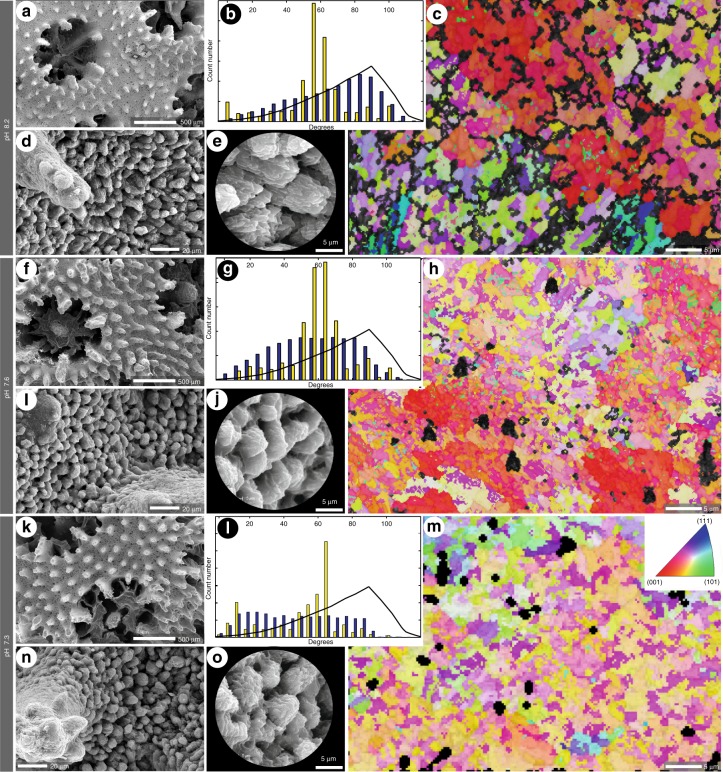Fig. 1.
Structural features of Stylophora pistillata cultured at pH conditions. Overall view of the colony surface with corallites and spiny coenosteum (a, f, k). Enlargements of the coenosteum showing granulated surface composed by bundles of fibres (d, i, n; details of the texture of bundles in zoomed areas (e, j, o). Note that the texture of bundles grown in 7.3 pH and 7.6 is more rounded than those grown in pH 8.2. EBSD orientation maps showing the crystallographic arrangement of thickening deposits crystals (c, h, m). Colour-coding assigns a colour to each possible orientation. Histograms (b, g, l) representing correlated (yellow bars) and uncorrelated (blue bars) misorientation of crystals (black line represents random distribution computed for this crystal symmetry). Correlated misorientation describes fibre-to-fibre relationships (in contact), whereas uncorrelated misorientation described relationships between fibres without direct contact (e.g., between different bundles). Misorientation is measured regardless of coral sectioning (morphological orientation of aragonite fibre bundles)

